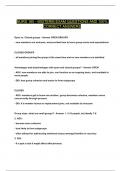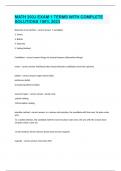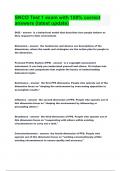Tentamen (uitwerkingen)
Business Strategy & Sustainability: Summary Paper Week 4
- Instelling
- Universiteit
Summary of all papers for week 4. 1. Mitchell, Agle & Wood (1997) Toward a theory of stakeholder identification and salience: defining the principle of who and what really counts 2. Jensen (2001) Value maximization, stakeholder theory, and the corporate objective function 3. Spar & La Mure (2003) T...
[Meer zien]













